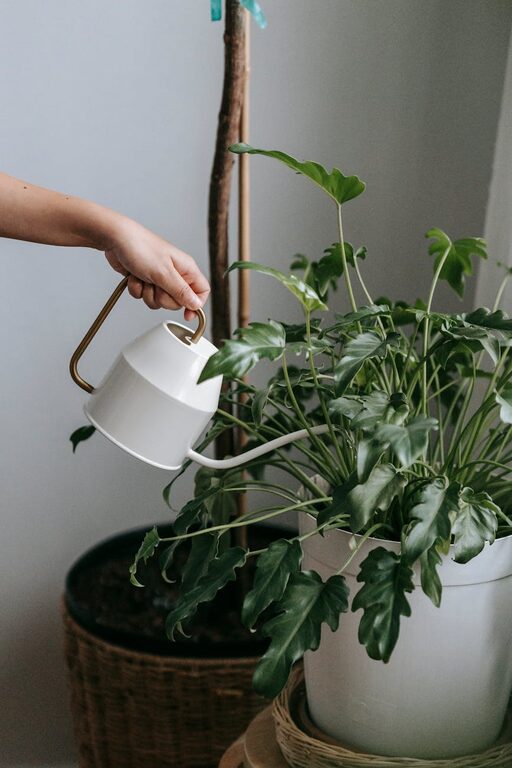Bringing houseplants into your home can add beauty, improve air quality, and create a calming atmosphere. However, keeping those plants healthy requires some attention and care. Whether you’re new to plant parenting or have a green thumb, following a few simple tips can help your houseplants thrive. This guide covers essential steps to maintain their health and vitality, from watering to sunlight needs.
Understanding Your Plant’s Needs
Every houseplant species has its own unique requirements, so the first step in plant care is getting to know your specific type.
– Research plant type: Learn about your plant’s natural habitat (tropical, desert, etc.) which indicates light, water, and humidity needs.
– Read plant labels: Often, nurseries provide care instructions on tags.
– Observe your plants: Watch for signs of stress like wilting, yellowing leaves, or leaf drop – these clues highlight what care adjustments are needed.
Proper Watering Techniques
Watering is one of the most common challenges and often the cause of unhealthy plants.
How Much Water?
– Check soil moisture: Insert your finger about an inch into the soil. Water only when the top feels dry.
– Avoid overwatering: Too much water can lead to root rot and fungal problems.
– Consider plant type: Succulents and cacti need less frequent watering than ferns or peace lilies.
Best Watering Practices
– Water thoroughly: When you water, do so until it drains from the bottom of the pot. This ensures full root hydration.
– Empty excess water: Avoid leaving plants sitting in standing water to prevent root problems.
– Use room temperature water: Cold water can shock roots.
Providing the Right Light
Light is essential for photosynthesis, but the amount and type vary widely among houseplants.
– Identify light needs: Some plants thrive in bright, direct light (e.g., succulents), while others prefer low or indirect light (e.g., snake plant).
– Understand your home’s lighting: Monitor which rooms get the most sun and for how long.
– Rotate plants: To ensure even growth, turn your plants every week so all sides receive light.
Maintaining Proper Humidity
Many houseplants come from humid climates and perform better with higher moisture in the air.
– Increase humidity: Use a humidifier or place a tray filled with water and pebbles near your plants.
– Group plants together: This naturally raises humidity around them.
– Mist delicate plants: Light misting can help, but avoid overdoing it, as excess moisture can promote disease.
Feeding Your Plants
Plants need nutrients to grow healthy leaves and stems.
– Use fertilizer: A balanced, water-soluble fertilizer helps replenish nutrients in potting soil.
– Feed during the growing season: Typically spring and summer are active growth periods when feeding is most beneficial.
– Follow directions: Overfeeding can harm plants more than underfeeding.
Choosing the Right Pots and Soil
The container and soil type impact your plant’s health and growth drastically.
– Use pots with drainage holes: This prevents waterlogging and root rot.
– Select appropriate pot size: A pot too big can hold excess water, while too small may restrict growth.
– Pick suitable soil: For example, succulents need well-draining sandy soil, while tropical plants prefer richer, moisture-retentive mixes.
Pruning and Grooming
Regularly trimming your plants keeps them tidy and stimulates new growth.
– Remove dead or yellow leaves: This prevents pests and diseases.
– Trim leggy growth: Snip long stems to encourage bushier plants.
– Clean leaves: Dust on leaves blocks light; gently wipe leaves with a damp cloth.
Watch for Pests and Diseases
Houseplants can attract pests like spider mites, aphids, or fungus gnats.
– Inspect plants regularly: Look under leaves and on stems.
– Use natural pest control: Wiping leaves with soapy water or neem oil can help.
– Isolate sick plants: Prevent spread by moving affected plants away.
Repotting Your Plants
As plants grow, they may outgrow their pots, which can limit root expansion.
– Signs it’s time to repot: Roots growing out of drainage holes or soil that dries out very quickly after watering.
– Choose a pot one size larger: This gives roots space without overwhelming the plant.
– Refresh soil: Repotting with fresh soil replenishes nutrients and improves drainage.
Creating a Routine
Consistency helps monitor plant health and reduces care mistakes.
– Schedule care tasks: Set reminders for watering, feeding, and rotating.
– Keep a plant journal: Note watering dates, fertilizer use, and growth progress.
– Be patient: Plants may take time to adjust after changes in environment or care.
—
By paying close attention to these key factors, you can create an ideal environment for your houseplants to flourish. Caring for indoor plants not only beautifies your space but also brings a sense of joy and accomplishment. Happy planting!

